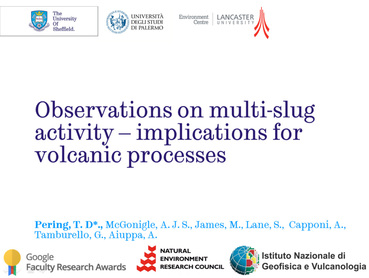 Muir Woods and The Golden Gate Bridge Muir Woods and The Golden Gate Bridge Here I am in San Francisco before AGU 2014, doing a little bit of sightseeing. I am staying in a fantastic hostel not too far from Union Square. Heading out yesterday morning to have a quick look around the city, I felt a little bit out of a place and a little bit like a gate-crasher! The reason? Half the city were dressed as Santa (some had made a better attempt than others)! Apparently, I had stumbled across the yearly event known as SantaCon. I have never heard of this before but the general idea seemed to be one large bar crawl - shame I didn't bring that Santa suit I have hidden away! In the afternoon, I decided to head over to see Muir Woods via a certain Golden Gate Bridge (on the recommendation of someone in the department). Muir Woods is home to some of the tallest trees in the world - the redwoods. It's a pretty cool little national park (if you have read other blog posts you will see that I have been to a few others in the US), a little bit hidden and out of the way. If I had had more time there are a network of trails around the hillside with views of the Pacific ocean if you get to the top - something for my next visit now I know that it's there. Google Earth/maps really doesn't do the view from the bridge into and out of San Francisco bay justice. Although, looking at the distance between Alcatraz and the mainland, it doesn't actually look that far. I am sure it would be different if I was the one doing the swimming (I am guessing it might be quite cold too). Today, I am off to Fisherman's Wharf to get some nom and have a look around. It has certainly been a while since my last blog post - it's getting to that time in my PhD where I am coming towards the end of data analysis (and collecting new data) and starting to think about the layout of my thesis. I have been so busy that I forgot completely about blogging. Anyhow, it always helps to have something to blog about, AGU and San Francisco the perfect example! On Wednesday I am presenting on some of the work I have been doing with observing and modelling (in the lab and computationally) slug driven activity. The abstract of this work is posted below.  Abstract: The study of single gas slugs in volcanic conduits has received a large amount of focus within the literature. However, the more complex behaviour associated with the rise and burst of multiple slugs has yet to be considered in detail in a volcanic context. Here we combine observations and analyses of such activity using a three-pronged approach consisting of existing gas mass data collected during rapid slug driven activity at Mt. Etna, scaled laboratory analogue experiments, and computer simulations using the Ansys Fluent® fluid dynamics software. Particular focus was applied to the process of coalescence and wake capture during slug expansion and rise. The results indicate a variety of potential features and relationships, including: promotion of coalescence at distances further than predicted wake lengths, approximate maximum gas volume fraction and minimum magma viscosity values for the occurrence of stable multi-slug activity, and in the laboratory regimes a series of linear trends are associated with overall gas volume fraction and burst volume. A previously observed phenomenon at Mt. Etna, whereby larger slug bursting events are subject to a longer repose period prior to the following event, than smaller events, is also evident in the lab setting. By combining all acquired and modelled data, we derive an approximate relation, using existing formulae for slug base rise speed (Viana et al. 2003) and wake length (Campos and Guedes de Carvalho, 1988), to describe a minimum repose period which is likely to follow the burst of a slug at the surface. The outlined work has significant fluid dynamic implications for possible magma and conduit properties which can allow multi-slug activity at volcanic targets. |
Archives
July 2023
|


 RSS Feed
RSS Feed